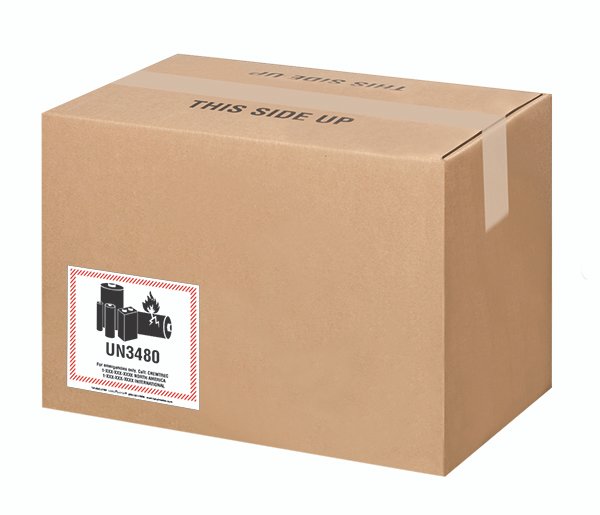By Thaddeus Puccini, Senior Executive, Packaging and Global Business Development, Labelmaster
It’s no secret that electric vehicles (EVs) are here to stay. The global EV market is expected to more than triple from $105 billion in 2021 to almost $355 billion in 2028.1 The number of EVs on the road is also expected to increase dramatically – from 8.15 million vehicles in 2022 to more than 39.2 million by 2030.
These changes are also ramping up quickly. In 2021, global EV sales doubled to 6.6 million vehicles, nearly reaching the critical milestone of 10% of all new vehicles sold.3 With the passage of the Inflation Reduction Act in August 2022, and California announcing a ban on new gas-powered cars by 2035 – with Washington, Massachusetts, New York, Oregon and Vermont likely following – EV sales in the U.S. could accelerate even further.
The diversity in EVs includes commercial tractors and transport vehicles, SUVs, sports cars and consumer level pickup trucks. However, the major commonality between all the vehicles is the power source of large-format lithium-ion batteries. Transporting these batteries and following all government-issued rules and regulations can be somewhat challenging to say the least.
The ongoing transport of new, end-of-life and damaged battery modules through the supply chain can be a complicated and highly regulated endeavor. And with nearly all automakers selling or unveiling EVs, every organization in the automotive industry – from the automakers themselves to the corner repair shop – needs a plan for large-format lithium-ion battery transport. Regardless of whether an organization is ever in a position of shipping an EV battery, knowing and understanding the proper rules and regulations will prove to be very beneficial to that organization and their supply chain partners.
Why Shipping Large-Format Lithium Batteries is so Challenging
Lithium-ion batteries are also prone to “thermal runaway,” which results in a ballistic reaction followed by an immediate flame that can propagate to other cells and surrounding packaging. Lithium batteries are classified as hazardous materials (hazmat)/dangerous goods (DG) and there are strict regulations that must be followed when shipping and handling them. These regulations depend on the size (watt hour) of battery and condition of battery (damaged vs. non-damaged).
Batteries that are not damaged, defective, or recalled (DDR) and have a watt-hour rating of less than 100Wh (e.g., laptop batteries) can ship as a non-fully regulated shipment by ocean or ground. And batteries with a watt-hour rating of less than 300Wh (e.g., power tools or drone batteries) can ship non-fully regulated by ground when proper labeling requirements are met.
Batteries with a watt-hour rating greater than 300Wh (such as those used in EVs), however, are considered “fully regulated class 9 shipments.” This means they must comply with all hazmat regulations for packaging, labeling, documentation, training and specified shipping methods.
Furthermore, because battery technology and safety standards are different, so too are the regulations.
Every transport mode requires compliance with a different set of regulations. This includes the 49 CFR for road and rail transport (in the U.S.), the IMDG code for vessel and maritime transport, and IATA Dangerous Goods Regulations for air transport. In many cases, lithium batteries are prohibited from being transported via air. Different countries may also have their own set of DG regulations, and must be considered.
Cargo carriers must also be considered. Even if you are 100% in compliance and the training, paperwork, and packaging are perfect, individual carriers ultimately get to decide whether to take your shipment.
Clearly, shipping lithium batteries requires considerable resources, expertise, and planning. This is especially true when it comes to shipping DDR batteries.
Battery Transport: More Than Just a Crate
When shipping DG, organizations often think they simply need to add a new label or possibly use different packaging. But effectively and compliantly transporting lithium batteries through the supply chain requires much more. It requires understanding the complex hazmat shippingregulations, and coordinating with a variety of supply chain partners, including manufacturers, distributors, logistics providers, recyclers, carriers and more.
Whether it’s managing a large recall or the daily transport of smaller battery modules, organizations must have a plan in place to transport these complex and highly regulated goods safely and compliantly. This plan should include:
- Knowing your batteries and the regulations that apply to them.
Many factors impact how goods are packaged and shipped, so it’s critical to know what exactly you’re shipping, and which regulations apply. Consider the dimensions of the battery, the weight distribution, power capacity and battery status. Then be aware of the rules and regulations that govern transport (especially any shipping restrictions), including any variations between country or transportation mode and any carrier or company-specific rules, and ensure you have the proper processes and infrastructure in place to maintain compliance across the supply chain. - Having packaging designed, tested and ready to go. Unlike most automotive parts, large-format lithium batteries can often require custom packaging. This specialized packaging must be able to handle the size and weight of the battery being shipped while passing all UN packaging group requirement testing standards. In the case of a DDR battery, other regulations must be followed. For example, for the inner packaging, the battery must be surrounded by cushioning material that is non-combustible, non-conductive and has enough absorbent material that is equal to or greater than the amount of electrolyte inside the battery being shipped.
When custom packaging is needed, it’s important to remember the steps that are followed. Itbegins with designing, constructing, and testing a prototype. Depending on the results of those tests, the packaging may need to be modified – and then tested all over again. The key takeaway is to ensure you have the proper packaging before you actually need the proper packaging.
Since the packages are heavy and often asymmetrical, special equipment and training are needed to ensure safe lifting and handling. And in this case, the packaging is extremely valuable.Proper shipping, and even storage, is critical to ensuring the containers don’t get damaged.
Establishing strong connections with supply chain partners.
Most large-format lithium battery transportation involves more than two parties. In some cases, such as during a recall, you might have to rely on several supply chain partners to execute various stages of a battery’s journey, including battery manufacturers, automotive manufacturers, distributors, logistics providers, recyclers, carriers and more. And for the operation to becompleted on schedule, those partners must be on the same page at all times. - Properly training employees and partners.
Training plays a critical role in ensuring goods are shipped safely and compliantly. Make sure all employees and relevant supply chain partners receive the necessary training – not only to comply with hazmat training mandates but also to prepare them to do their jobs correctly. Incorporating digital and elearning tools helps train workers remotely and are often more interactive and effective than more traditional methods.
Proactively Prepare for a Lithium Battery Recall
Most automakers likely have some plans in place for transporting large-format lithium-ion batteries, especially if they’re already selling electric vehicles. Unfortunately, recalls are unplanned and challenging events that companies across the supply chain are not typically ready for, and for which they often make mistakes that cost time and money, and put them at risk.
With large-format lithium batteries, it’s essential to have a plan in place to deal with potential issues before they become real problems. That plan encompasses all the basic compliance and transport requirements, along with making sure the organization is prepared for the following items in advance:
- Determining which batteries (or cellular module assemblies—a.k.a. CMAs) can be re-used (if any), and which need to be recycled.
- Designing, testing, building and sourcing packaging systems for DDR batteries.
- Determining which packaging components can be re-used and which need to be replaced.
- Identifying battery recycling partners and understanding what they will require.
- Ensuring regulatory compliance for every step of the program, across all transport modes and destinations.
Driving Lithium Battery Transport Forward with a Trusted Partner
As the EV market continues to grow, understanding and managing lithium battery transport becomes increasingly critical. From large recalls to ongoing, daily transport of smaller battery modules, regulatory compliance, proper packaging, and correct shipping processes – regardless of battery status – will require time and resources that some companies may not have.
The best way to make sure all aspects of large-format lithium battery transport are covered is to find a partner who’s done it all before. A trusted partner can help companies understand and navigate every facet of the lithium battery journey – from understanding the latest regulations and the packaging process, to transport and training. Don’t discount the value of taking that burden off the internal team. A partner can also assist in evaluating whether the batteries can be reused or recycled.
And in the event of a recall, they can make sure the reverse logistics are covered. Perhaps most importantly, a partner can bring much-needed expertise to understand and help coordinate the internal supply chain.
Thaddeus Puccini is the Senior Executive, Packaging and Global Business Development for Labelmaster, where his focus is to support the safe and compliant shipping and handling of dangerous goods around the world. With an emphasis on electric vehicle batteries and other large-format lithium-ion batteries, Puccini offers the next-level sustainable and reusable packaging solutions, along with regulatoryconsulting services that meet the exact needs of any organization.





![Hyundai’s electric hot hatch spotted out in the wild for the first time [Images] Hyundai’s electric hot hatch spotted out in the wild for the first time [Images]](https://ev-magazine.com/wp-content/uploads/2025/12/1766723605_Hyundais-electric-hot-hatch-spotted-out-in-the-wild-for-324x160.jpeg)